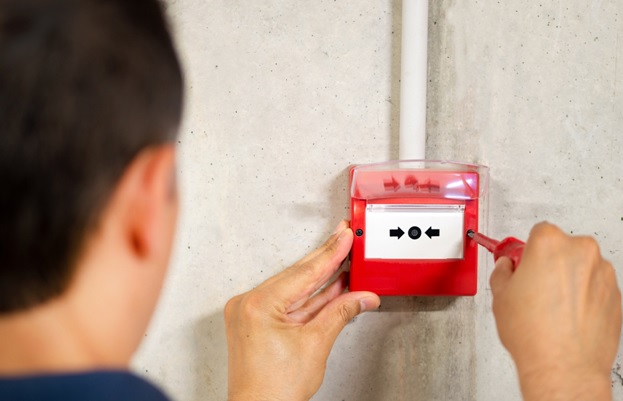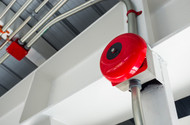About Fire Alarm Cable: Specifications, Standards, and Common Questions
18th Sep 2023
One of the most important elements of any fire alarm system is the cable used to power it.
You know, if the fire alarm cable doesn’t do its job, the whole system doesn’t work.
And there is more to fire alarm cable than you might expect. Here are some of the standards, specifications, and common questions, answered.
What Is Fire Alarm Cable Used for? Does It Have Any Special Properties?
No surprises here. Fire alarm cable is used to power and monitor a fire alarm system.
There are two main types of fire alarm systems: conventional and addressable.
Conventional fire alarm systems are the ones we all think of when we hear the word “fire alarm.” These consist of a central control panel with cables that branch out from there and power and manage the system’s other nodes, being smoke detectors, heat detectors, and alarms.
On the other hand, think of an addressable fire alarm system as a “smart” system, in which each initiating device (alarms, detectors, switches) has its own unique address, making it easier to identify, diagnose, and repair issues with the system. Addressable systems require less fire alarm cable to wire, as well.
Fire alarm cables are designed with special insulating plastics that produce less smoke when they burn, do not release toxins, and some are made to be self-extinguishing if they catch fire.
Fire alarm cables are also usually manufactured with a red insulating jacket. This makes it easier for electricians to identify them quickly at a glance, streamlining service.
What’s the Difference Between Plenum and Riser-Rated Cable?
Two of the most important designations you will come across in fire alarm cable have to do with their ratings as either plenum cable or riser rated cable.
Riser-rated fire alarm cable is designed to be used in riser space, which is the vertical space between the floors of a building that communicates between the different floors. Riser-rated cables are designed to produce little smoke, emit no toxins, and self-extinguish. They must satisfy UL 1424 and UL 1666 vertical riser test standards.
Plenum-rated fire alarm cable is intended to be used in plenum space, which is the space beneath a raised floor or above a drop-ceiling. This is the space where HVAC ductwork is often contained. These cables can be used in areas where there is high ambient airflow and must pass UL 1424 tests and be Steiner tunnel test 910. Plenum cable is also more expensive than riser-rated cable.
Like riser-rated cable, plenum-rated cable must produce little smoke when burning and self-extinguish. While plenum-rated cable can be used in riser space, it is important to remember that riser cable should not be used in plenum space.
What Standards Are Applicable to Fire Alarm Cable?
There are several different organizations that produce and maintain standards commonly applied to fire alarm cable.
One of these is the NFPA, or National Fire Protection Association which is instrumental in producing the NEC, or National Electric Code, which prescribes standards not only for fire alarm cable but for all different sorts of electrical equipment.
Other organizations involved in setting standards and developing standardized testing for fire alarm cables are ASTM International and Underwriters Laboratories (UL).
What’s the Difference Between Power-Limited and Non-Power-Limited Cable?
One of the fine distinctions in fire alarm cables is between power-limited and non-power-limited cable, though this is not always well understood.
Power-limited, or PL cables, are intended to connect to power supplies that limit the power and voltage that can travel through the cables.
Conversely, non-power-limited cables do not require a power source that is limited, and can work with voltages typically up to 600V. They are less commonly used than power-limited fire alarm cables.

What Is Shielded Cable? When to Use It?
One other distinction between the different types of fire alarm cable has to do with shielding.
Shielded fire alarm cables are encased within a foil “shield” that blocks out electromagnetic interference, also known as EMI.
EMI can arise from natural or manmade sources, but regardless of the origin, EMI can scramble an electrical system or completely incapacitate it.
Therefore, shielded cables must be used wherever there is a high risk of EMI interfering with the system, such as if the cable is run along with a lot of other different power lines.
Non-shielded fire alarm cables lack this protective foil shield and are more suspect to EMI.
Do You Still Have Questions About Fire Alarm Cables?
If this post didn’t answer one of your questions about fire alarm cables or about other types of alarm cable or wire, get in touch with us directly. You can reach us by phone at 1-800-262-1598 or by email at Sales@EWCSWire.com.
We offer a wide range of electrical wire and cable including many highly-specialized electrical conductors and would be more than happy to help you find what you need.

